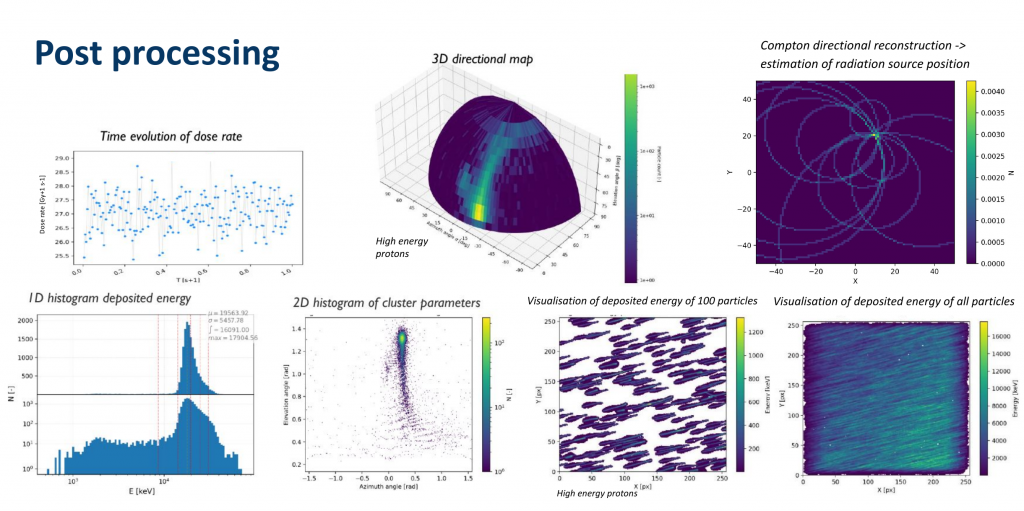The primary objective of our Research Department is to spearhead the development of state-of-the-art detection systems for imaging solutions using advanced semiconductor sensors. We leverage our deep understanding of semiconductor physics and cutting-edge technologies to pioneer breakthrough imaging systems that revolutionize industries such as medical imaging, industrial inspection, particle tracking in radiotherapy and space, and scientific research.
1/
Imaging
The Timepix instrumentation and developed methodology by our research group were used for imaging of various samples with µm resolution using various types of radiation (e.g. X-ray, helium imaging and proton radiography), electron microscopy, small animal CT.
This captivating image of a sea horse (Hippocampus guttulatus), showcases the capabilities of the Timepix2 chip developed as part of the Medipix2 collaboration. Courtesy of Štěpán Polanský
Medipix technology revolutionizes X-ray imaging by providing high-resolution, high-contrast images that are entirely devoid of noise. Unlike conventional X-ray detectors, Medipix employs single-photon counting, enabling the detection and measurement of individual X-ray photons. This enhances image quality while reducing radiation exposure.
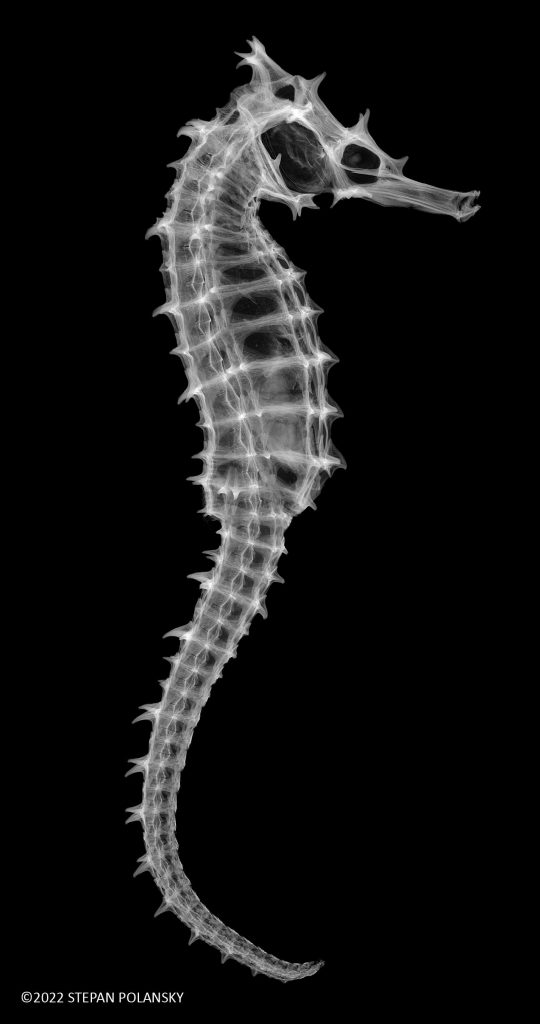

2/
Detectors development and testing
In addition to our scientific endeavors, the Research department actively contributes to the advancement of Advacam’s distinctive products. We engage in collaborative efforts with our colleagues to test novel prototypes across various operational modes. Our role extends beyond mere testing; we assist in the interpretation of data and strive to identify the optimal operational parameters that align with the intended usage of the products. This feat is made possible by the profound insights of our team, rooted in technical expertise and extensive experience. Through our research projects, we not only characterize new sensors and readout chips but also demonstrate their practical applicability, effectively breathing life into our cameras.
3/
Space research
Space research presents unique challenges, including exposure to high levels of radiation. To mitigate risks and ensure the safety of astronauts and equipment, advanced technologies are crucial. One such technology making significant contributions to space research is Timepix detectors. These cutting-edge detectors offer unparalleled capabilities for space radiation monitoring, radiation dosimetry, and customized applications, enabling enhanced safety measures and a deeper understanding of the space radiation environment. ADVACAM produces advanced radiation imaging detectors and novel particle tracking cameras based on state-of-the-art Timepix and Timepix3 ASIC chip CERN technology. Low-power light-mass payloads are most valuable for high-resolution wide-range detection and monitoring of space radiation on board satellites for ESA (compact payloads for spacecraft) and on the ISS/NASA (miniaturized online radiation dosimeters for space crew). The innovative devices together with advanced methodology and precision data processing enable to characterize mixed radiation fields in wide range of particle fluxes, energy (stopping power) and direction (full sky field-of-view). Several space related detectors and products were developed within the following projects:
“Miniaturized Radiation Monitor for GEO-orbit telecommunication satellites”, contract MIRAM for ESA, together with the IEAP CTU Prague.
- Pixel Detector Data Processing Engine”, contract DPE for ESA, prime contractor Advacam.
- “Space Radiation Capabilities, Technologies and Payloads”, contract SR-CTP for ESA, together withSERENUM, CSRC/BD Sensors, VZLU and Rigaku.
- Online miniaturized radiation dosimeters MiniPix-TPX for space crew onboard the ISS and NASA ORIONmissions, direct NASA-JSC and ADVACAM activity.
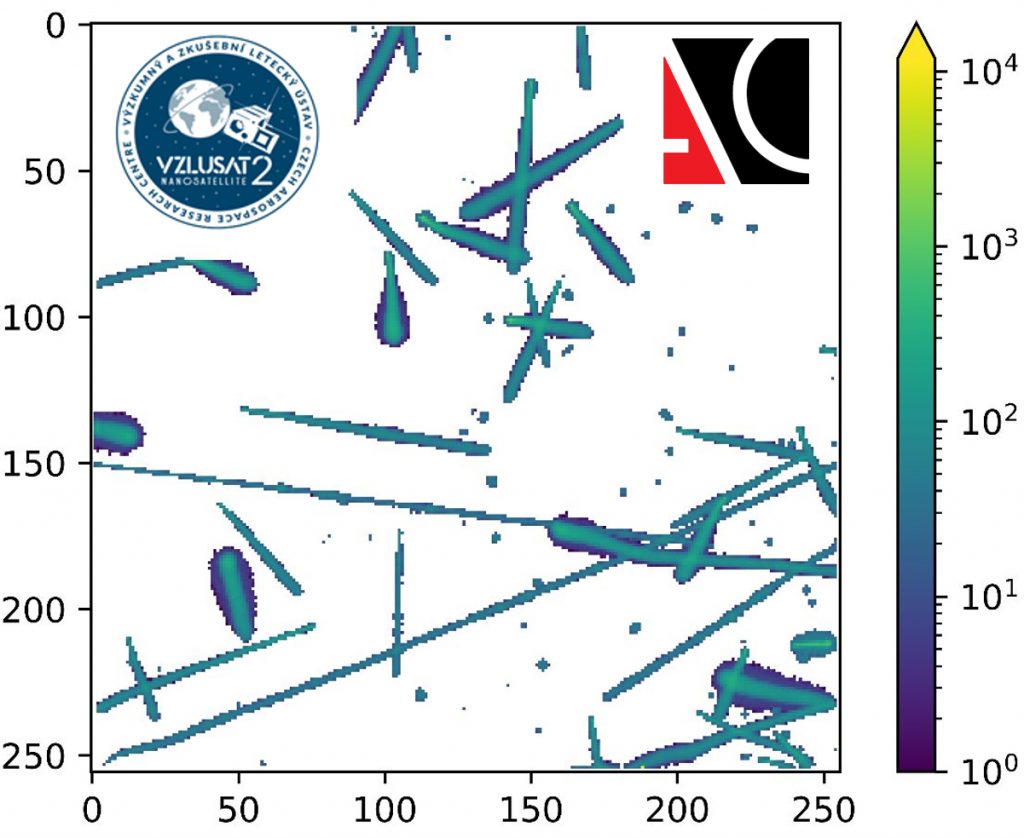
Space radiation – visualization of energetic charged particles in LEO orbit by Timepix CdTe 1000 µm
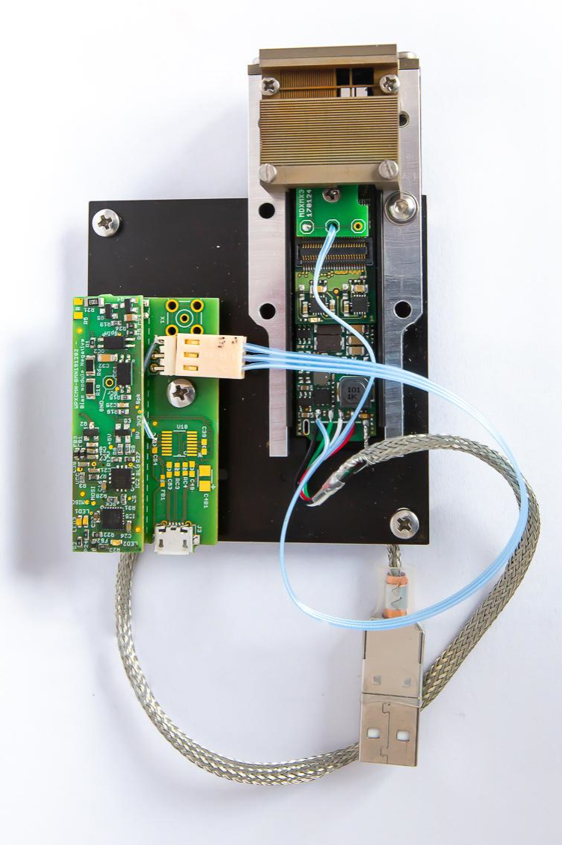
4/
Particle therapy
Particle radiation therapy (RT) is a promising technique with advantages and also challenges, presently subject of research of our department. We apply high-granularity semiconductor pixel detectors together with advanced techniques of radiation imaging and particle tracking to characterize the complex and highly variable radiation fields produced in proton and ion beam RT. For this purpose, we performed experimental studies with particles in a wide range of energies and species using light, medium and heavy ion beams. The majority of these experiments have been conducted in air or within a water phantom, which closely mimics the components of the human body (refer to the picture below). Furthermore, our research is conducted in collaboration with proton and ion therapy facilities, as well as hospitals specializing in conventional radiation therapy.
By addressing these research goals, our team aims to enhance our understanding of particle therapy and contribute to the development of improved techniques and technologies in this field.
Our research team is driven by the following goals and research topics:
- Measurements of the Linear Energy Transfer spectra (LET) with directional sensitivity across a wide field-of-view (FoV). This includes primary particles, as well as resulting charged particle fragments and secondary particles (ions, protons).
- Characterization of the secondary scattered radiation, encompassing the identification of particle type components within mixed fields (see figure below).
- Determination of absolute flux values for various particles generated within the beam or out-of-field.
- Neutron measurements to characterize the out-of-field component in particle therapy and explore novel radiotherapy techniques.
- Treatment time monitoring through the utilization of time-stamp information obtained from measured particles.
- Radiation monitoring and dosimetry.
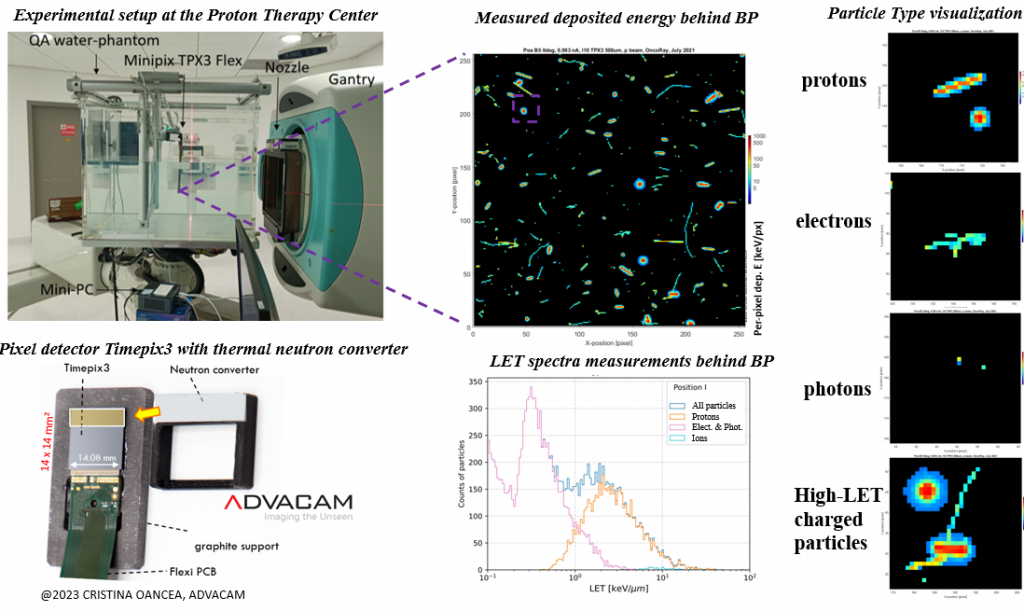
The image above is an experimental setup at the Proton Therapy Center. The customized miniaturized detector TimePIX 3 in Flexi configuration is used. The detection system is placed 5 centimeters behind the Bragg peak. In a mixed field, various particles are detected and identified as protons, electrons, photons, etc. The LET spectra was measured. Conducted by Cristina Oancea, ADVACAM
5/
Advanced data processing
The Timepix family of hybrid semiconductor pixelated detectors provide online particle tracking capabilities. Each particle of various types and energies can be tagged with precise time stamp. Given the inherent complexity of the measured data, various sophisticated analyses have been developed and employed to extract the required information from the acquired data.
The “Data Processing Engine” (DPE), a data processing tool developed by researchers at ADVACAM, encompasses a wide range of common processing techniques, as well as several specialized methods. It serves as a user-friendly platform for accessible, rapid, and reliable data analysis specifically designed for Timepix detectors. The functionality of the DPE can be divided into three distinct processing levels:
The functionality of the DPE can be divided into three distinct processing levels:
- Pre-processing: This level involves clusterization, application of necessary calibrations, and the implementation of corrections to enhance data quality.
- Processing:
- Particle classification: Employing machine learning algorithms, the DPE facilitates the classification of particles based on various characteristics.
- Radiation field recognition: The DPE is equipped to identify and analyze different radiation fields encountered in the data.
- Post-processing: This level encompasses directional analysis, coincidence analysis, Compton camera imaging, generation of physical products, and the examination of their temporal evolution in relation to radiation field classification, etc.
Example of physical products created during data post-processing. Images created by Lukáš Marek, ADVACAM
Central to the processing core of the DPE is a comprehensive database that contains referential radiation fields typically encountered in various environments. Examples of such fields include 60Co, 241Am, protons, electrons and AmBe neutron sources. The DPE is capable of searching for the best match or similarity between the user’s measured data and entries within the database. Moreover, this database serves as a valuable resource throughout the entire development process of the engine, providing a reliable and well-known reference for comparison and analysis.
To facilitate convenient access to the full functionality of the Data Processing Engine (DPE), it has been implemented both as a command-line tool, ensuring fast processing capabilities, and as a graphical interface, offering a user-friendly experience. This dual implementation allows users to choose the most suitable interface based on their specific requirements and preferences.
In order to further enhance accessibility, a web portal application has been developed, enabling users to easily upload their data for external processing and visualization. This web portal provides a seamless and intuitive platform for utilizing the DPE’s capabilities remotely.
For more in-depth information and additional details about the Data Processing Engine, please visit our dedicated wiki page at: https://wiki.advacam.cz/index.php/DPE. This resource will provide comprehensive insights into the functionality, features, and usage of the DPE.
To easily access all DPE functionality, it is implemented as command line tool for fast processing but also with a graphical interface. The accessibility is extended to a web portal application in which an user can upload data for external processing and visualisation. For more details, please visit our wiki page: https://wiki.advacam.cz/index.php/DPE
6/
Industrial applications
Collaboration is at the heart of our Research Department. We actively partner with academic institutions, industry experts, and research organizations to exchange knowledge, leverage expertise, and stay abreast of the latest scientific advancements. This collaborative approach not only enriches our research endeavors but also enables us to translate scientific discoveries into real-world applications efficiently.
The Research Department of ADVACAM s.r.o. is dedicated to pushing the boundaries of imaging technology, fostering innovation, and driving scientific progress. We invite you to explore our website and discover the remarkable work our team is doing by accessing the list of publications.
Timepix detectors have found numerous industrial applications due to their unique imaging capabilities and high spatial and temporal resolution. Here are some examples of how Timepix detectors are used in industrial settings by our scientists:
- Non-destructive testing: Timepix detectors enable non-destructive testing methods by providing detailed imaging and analysis of objects and materials without causing damage. This is particularly useful in industries like aerospace and automotive, where the integrity of components needs to be assessed without compromising their functionality.
- Materials science research: Timepix detectors are used in materials science research to investigate the properties and behavior of various materials. Their high-resolution imaging capabilities allow for detailed analysis of crystal structures, surface morphology, and material composition.
